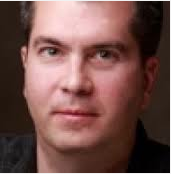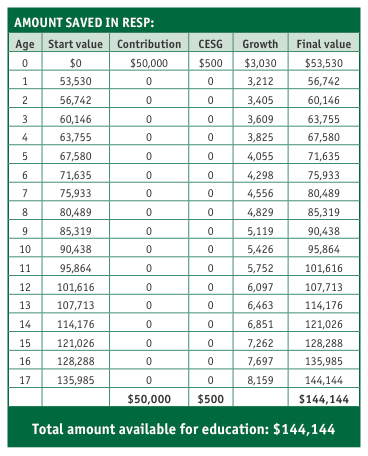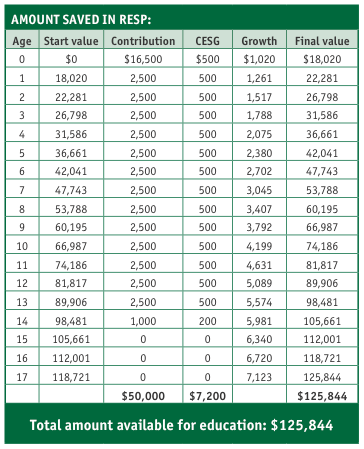What’s The Best Way To Gift Money For Education?
 One of the most meaningful gifts a grandparent can give to a grandchild is a post-secondary education. Such a gift also takes some of the burden away from the child’s parents who may be struggling to save for their kids’ education while also dealing with a mortgage, daycare, hockey equipment and all of the other costs of raising a family. The question is: what’s the best way to structure that gift?
One of the most meaningful gifts a grandparent can give to a grandchild is a post-secondary education. Such a gift also takes some of the burden away from the child’s parents who may be struggling to save for their kids’ education while also dealing with a mortgage, daycare, hockey equipment and all of the other costs of raising a family. The question is: what’s the best way to structure that gift?
We recently worked with clients in this situation, and they asked us to consider the options. The couple (we will call them Frank and Helen) wanted to invest $50,000 to fund the future studies of their brand new granddaughter, Alessandra. One option was to contribute the entire lump sum to an RESP immediately. A second was to make these contributions gradually in order to collect all of the available grant money.
To appreciate this trade-off, it’s important to understand the following relevant characteristics of RESPs:
- There is no annual contribution limit on RESPs, but there is a lifetime cap of $50,000.
- The Canada Education Savings Grant (CESG) tops up contributions by 20%, but with several limitations.
- The maximum grant that can be received in any one year is $500 (on a $2,500 contribution).
- However, if there is unused grant room from previous years, up to $1,000 in CESG can be received in one year (this requires a $5,000 contribution).
- The lifetime maximum grant is $7,200.
Money contributed to an RESP is not tax-deductible, but it grows tax-free. When the child enters post-secondary school, the growth on the investments and the grant money are taxable in the child’s hands. The original contributions can be withdrawn tax-free.
With this in mind, our goal was to determine which of the two strategies—lump sum or gradual contribution—would result in the most money available when Alessandra reaches university. The answer would depend largely on the rate of return Frank and Helen expected from their investments. We also needed to consider what to do with the portion of the $50,000 that would not be immediately invested in the RESP. We assumed it would need to be held in a non-registered account and taxed every year.
In the tables below, we compare the alternatives using the following assumptions:
Scenario 1 assumes the $50,000 is invested immediately in the RESP and no further contributions are made. The only CESG received is $500 in the first year.
Scenario 2 assumes that $16,500 is invested immediately in the RESP and $2,500 is added annually. This strategy would allow Frank and Helen to obtain the $500 grant every year until the $7,200 maximum is reached. The total amount invested is still $50,000. Any amount not invested in the RESP would be kept in a non-registered account and taxed at the rates that would apply to an Ontario resident earning $90,000 in 2016.
In both scenarios we assume the money is invested in a balanced portfolio that earns 6% annually, consisting of 2.5% interest, 2.5% Canadian dividends, and 1% capital gains.
We assume that none of the RESP money will be taxed on withdrawal, since the growth and grant money would be taxed in Alessandra’s hands, and full-time students often have no tax payable after maximizing their deductions.
Scenario 1. Lump sum RESP contribution in first year

Scenario 2.Annual contributions to collect maximum CESG

Which Option Wins?
Let’s review the key numbers in these tables.
In Scenario 1, the $50,000 lump sum earned only $500 in grant money, but it compounded tax-free for 18 years. With a return of 6% annually, the gift would grow to more than $144,000 by the time Alessandra headed off to university.
In Scenario 2, Frank and Helen contributed $16,500 in the first year and then made smaller contributions in every subsequent year, which allowed them to collect the full $7,200 in CESG money. But the smaller initial RESP balance meant there was less money benefitting from tax-free compounding, while all of the investment gains outside the RESP were taxed annually. The RESP would grow to $125,844, while the non-registered account would have a balance of $18,781 when Alessandra turned 18. Add those two balances and you get just over $144,000—almost exactly the same as in Scenario 1.
Our analysis suggests that in Frank and Helen’s situation, the breakeven rate of return is about 6%: if Frank and Helen were able to earn that return annually, both scenarios would leave Alessandra with almost identical amounts for her education. If their investment returns were significantly lower, then maxing out the CESG (Scenario 2) would have resulted in a better outcome. For example, with a 3% return (2% interest, 0.5% Canadian dividends and 0.5% capital gains), the lump sum investment (Scenario 1) would have grown to $86,000 while the gradual contributions (Scenario 2) would have netted $6,000 more.
We believe RESPs should be invested conservatively, so a 6% return is significantly higher than we would expect to achieve. Therefore—perhaps surprisingly—contributing the $50,000 lump sum to the RESP is likely to be the better option for Frank and Helen, even though they would forfeit $6,700 in government grants. This option also has the value of being the simplest: Frank and Helen could put the entire $50,000 in a low-cost conservative fund inside the RESP and not worry about it until Alessandra is in high school. There would be no need for annual transfers from one account to the other.
What other factors would change this advice? The gradual contribution scenario would be preferable if Frank and Helen were in a much lower tax bracket. For example, at the lowest Ontario marginal rates, the total amount available for education would have been about $9,000 higher in Scenario 2.
With that in mind, if Frank and Helen were able to invest the excess in a TFSA rather than a non-registered account, Scenario 2 would always result in a better outcome, since they would benefit from tax-free compounding and receive the maximum government grant. In the case of our real-life clients, their TFSAs were already maxed out, so they decided to gift the $50,000 to their son (Alessandra’s father), who put $16,500 in an RESP and the remaining $33,500 into his own TFSA. He plans to make the subsequent $2,500 RESP contributions every January using money withdrawn from the TFSA. For her part, Alessandra says she’s fine with either scenario.
Dan Bortolotti is an investment advisor at PWL Capital in Toronto and the creator of the award-winning Canadian Couch Potato blog (canadiancouchpotato.com). He would like to thank his colleague, Justin Bender, for his assistance with the analysis presented in this article.

